Tips & How to travel to Oman in 2021
0 View
Share this Video
- Publish Date:
- January 12, 2022
- Category:
- HOW TO -
- Video License
- Standard License
- Imported From:
- Youtube
Tags
Sponsored Area
TODAY'S ADVENTURE
Tips & How to travel to Oman in 2021>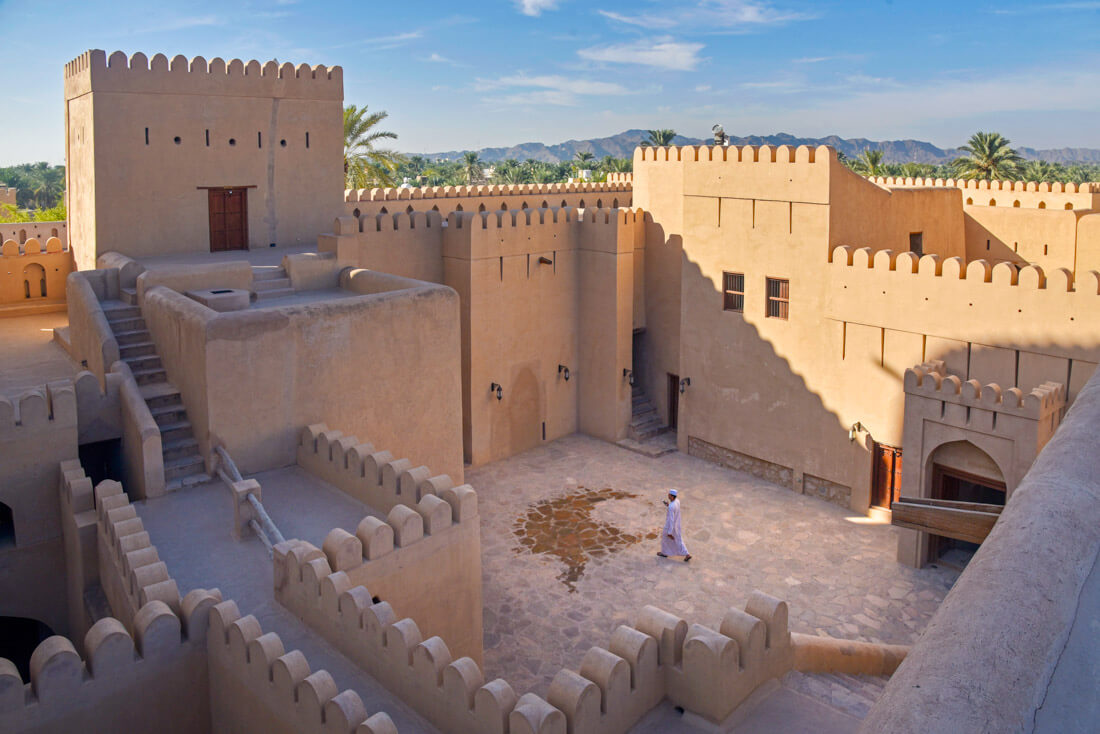
Alluring Arab fortresses, 3000km of dramatic coastline, massive seas of dunes, thousands of miles of empty roads, and unspoiled landscapes. Oman is the ultimate destination for raw adventurers, seeking to venture into the most traditional and welcoming Arab country. This Oman travel guide contains everything you need to know to travel to Oman, including all the practical information, travel tips, top experiences and more.If you are interested in Saudi Arabia, read here how to get a visa and travel to Saudi
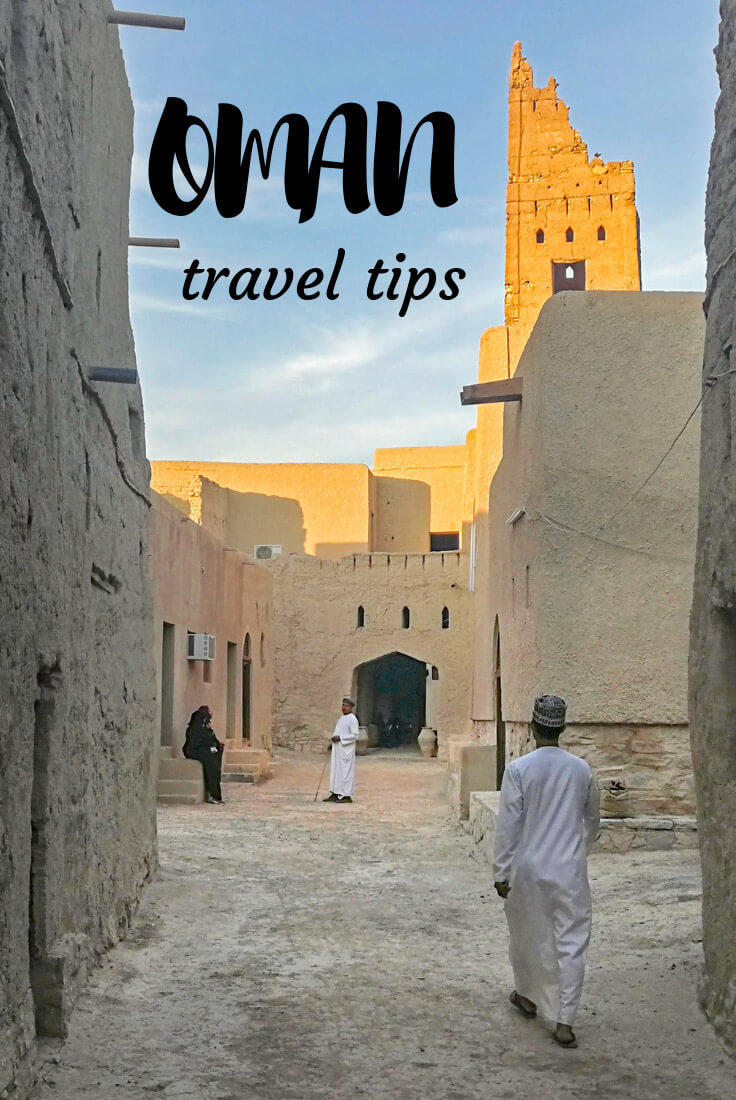
In this Oman travel guide you will find:
COVID-19 travel restrictions Why visit Visa Best time to visit Travel insurance Useful books Top 5 experiences Tours or independent travel? Safety 20 Cultural facts Food Money and budgeting Transportation How to get in Accommodation Internet More information
Looking for accommodation? Check my guide to the best areas where to stay in MuscatCOVID-19 Travel restrictions to Oman
Update October 2021: Oman is currently open for tourism, and the following Coronavirus-related restrictions apply:For traveling to Oman, you must present:
Your vaccination certificateComplete the registration form, uploading your vaccination certificate (before traveling to Oman)Negative PCR test 72hTravel insurance which covers for at least 1 month treatment of COVID- 19. For this, I strongly recommend IATI InsuranceIf you book it through my link, you get a 5% discount.
For leaving Oman
Your country or airline may require a negative PCR test. In Muscat, tests are done at the Airport Drive-through and Walk-in facilities, located in P5 car park. Results in 24 hours. For taking the test, you must register via this link.
For more details and updates, check the official website.
Reasons to visit Oman, the most welcoming country in the Middle East
I have visited Oman 7 or 8 times.
The fact is that I lived in Dubai for nearly 3 years, and going to Oman was the classic weekend getaway.
Two years after leaving Dubai and my corporate job, I came back to the region and decided to travel around Oman for a whole month, this time without a car, right before making my way into Saudi Arabia.
I love Oman, I absolutely love it, for many reasons, but mainly because, unlike the United Arab Emirates, Qatar or Kuwait, it has managed to keep its own character.
Oman is an oil-rich country, but they don’t need to spend billions building extravagant buildings and nonsensical monuments. No, they don’t need to because people visit Oman to meet the kind-hearted Omanis, to check out the incredible coastline and the most epic mountains in the Arabian Peninsula, which go as high as 3,028m.
Despite the modernization of the country, Oman has managed to preserve all its traditions and that is why, today, here you can still attend a livestock market and always share a meal with a local in the traditional way.
Not surprisingly, Oman is getting immensely popular, but the good thing is that the country is big enough, so you can still find loads of off-the-beaten-track places that have remained untouched for centuries.
Welcome to Oman.
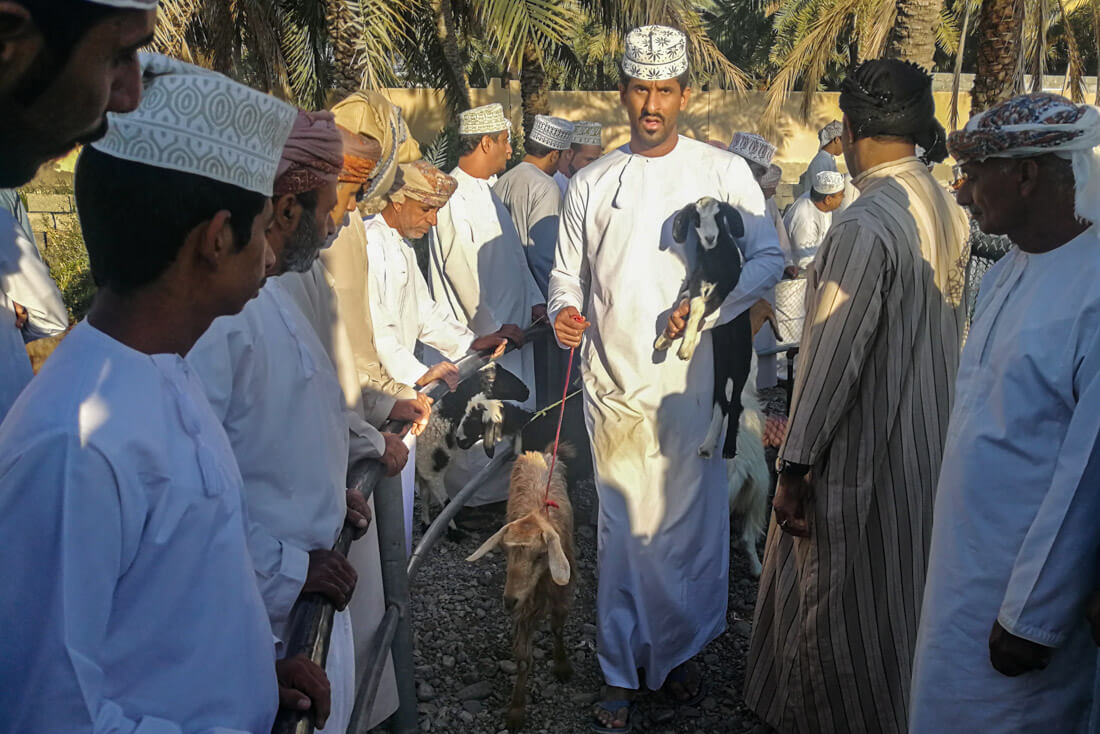
I was the only tourist attending this animal auction in Rustaq, one of the highlights of my trip to Oman
How to get a visa for Oman
Most nationalities can buy an Oman tourist visa on arrival:
30-day visa: 21 rials or 60USD. 10-day visa: 5 rials or 13USDMultiple-entry visa, valid for 1 year: 50 rials or 130USD.If possible, try to pay in either Omani Rials or with a credit card, because the price in USD is higher than the actual exchange rate.
You can also buy your Omani visa online through this portal at a discounted price (around 1 rial), which is 2-3USD, for the 30-day visa at least.
What nationalities are eligible for visa on arrival?
European Union, Andorra, Argentina, Australia, Bolivia, Brazil, Brunei, Canada, Chile, Colombia, Ecuador, Hong Kong, Iceland, Indonesia, Japan, Lebanon, Liechtenstein, Macau, Macedonia, Malaysia, Moldova, Monaco, New Zealand, Norway, Paraguay, San Marino, Seychelles, Singapore, South Africa, South Korea, Suriname, Taiwan, Thailand, Turkey, United States, Uruguay, Vatican City and VenezuelaIf you come from any other country, I suggest you check the e-visa portal.
Do you have UAE residence?
If you are not on the lucky countries list, but you are living and working in the United Arab Emirates, you may also be able to get a visa on arrival. However, you should check it with your own embassy.
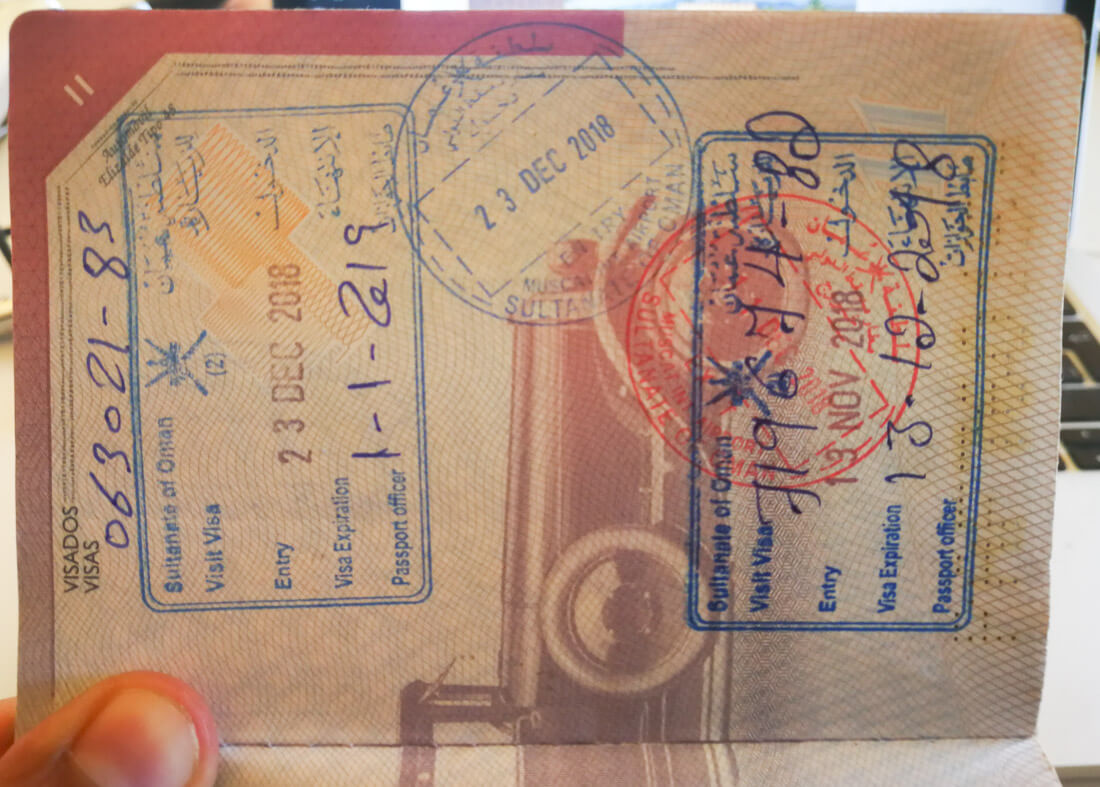
Entry & stamp for Oman – Oman travel blog
Best time to visit Oman
In Oman, there really isn’t a spring or autumn season but the weather just evolves from crazy hot to pleasant. Note that, depending on the year, May and October could still be really, really hot.
Traveling in Oman in summer – From May to October
PROS:Pleasant weather in the high mountains Low-season prices Monsoon season in Salalah (South Oman)CONS:Unbearable heat across the country High levels of humidity in the coastal areasTraveling in Oman in winter – From November to April
PROS:Pleasant weather across the whole country Loads of social life, events, etc. Omanis are in their best moodCONS:Higher prices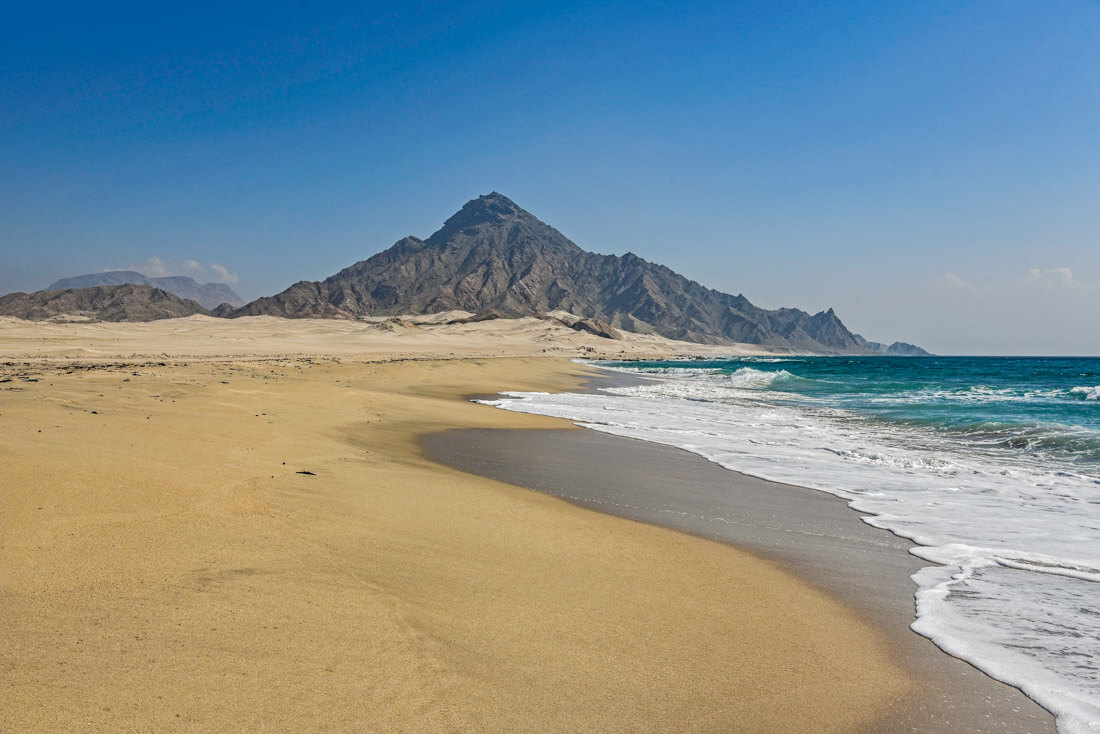
One good Oman travel tip I can tell you is that summer is so hot that you can’t even go to the beach because the level of humidity is just crazy
Travel insurance for Oman
Hey, Oman is an adventure destination, a country where you may be camping in the wild, go trekking and do epic road trips, plus their health care system is private. For this reason, you should get the right insurance, one which covers both adventure activities and COVID-19. I strongly recommend IATI Insurance because:It has full COVID-19 Coverage (basic requirement for traveling to Oman)Adventure coverageReaders of this blog get a 5% discountGET IT HERE TO GET YOUR DISCOUNTBooks for planning your trip to Oman
Oman Travel Guide by Bradt
The guide to Oman by Bradt is, definitely, the best guidebook about Oman that exists.CLICK HERE TO CHECK PRICES ON AMAZON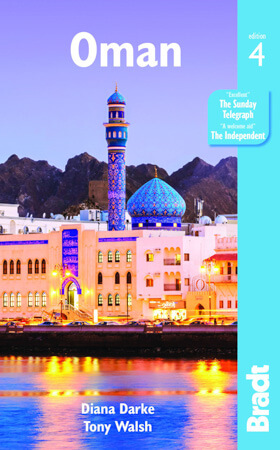
Arabian Peninsula travel guide by Lonely Planet
They also mention UAE and other Gulf countries but if you like collecting the LP or want to combine a few countries, this is also a good option. CLICK HERE TO CHECK PRICES ON AMAZON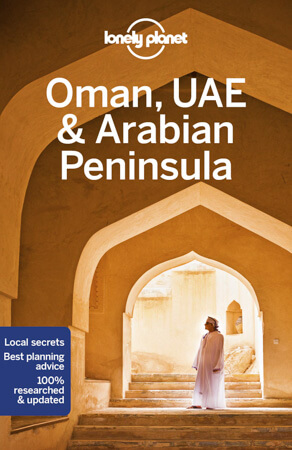
5 Top experiences in Oman
Some travelers may not agree with the below list, basically because they might not be part of the tourist trail, but having visited Oman extensively, getting quite off the beaten track, these are the must-try experiences worth to be featured in this Oman travel blog.
Traveling to Dubai? Read my complete 1-week itinerary to UAE for the independent traveler1 – Experience the khareef season in Salalah
In Oman, there is a place full of green meadows, where it rains, and the locals sell locally-grown coconuts, pineapples, and papayas. This place is called Salalah, in southern Oman, a city that experiences a monsoon season called khareef, which takes place from July to September.
During this season, Salalah becomes beautiful and lush green, attracting visitors from all over the country, as well as Saudi Arabia and the UAE.
Check my ultimate guide to visit Salalah and the rest of Dhofar region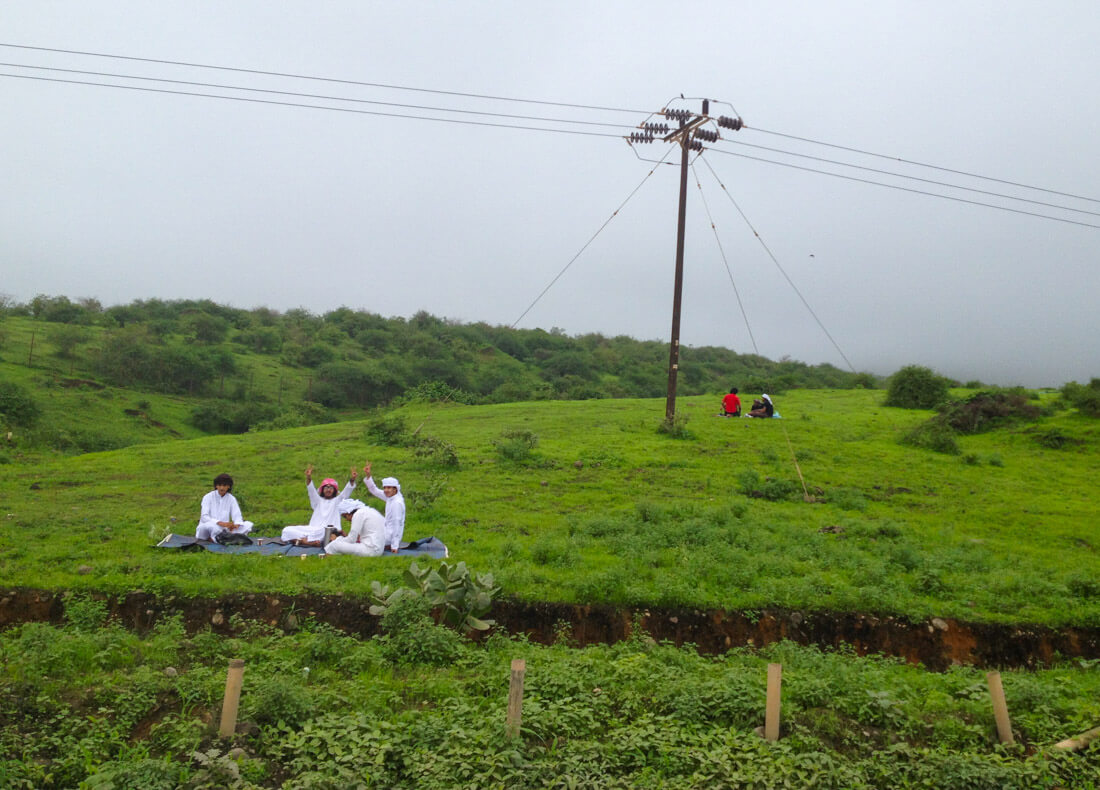
Lush green hills of Salalah during the monsoon season – I took this photo in 2014, the first time I visited Oman
2 – Driving the coastal road from Salalah to the Yemeni border
Very few travelers visit this remote part of the country, which is a real shame, because the coast of Dhofar province is home to the most dramatic coastline in Oman, composed of lush green mountains which, at the same time, serve as vertiginous cliffs that directly drop to turquoise-blue waters.
A type of landscape you would never think of in the Arabian Peninsula.
It looks like Hawai, right?
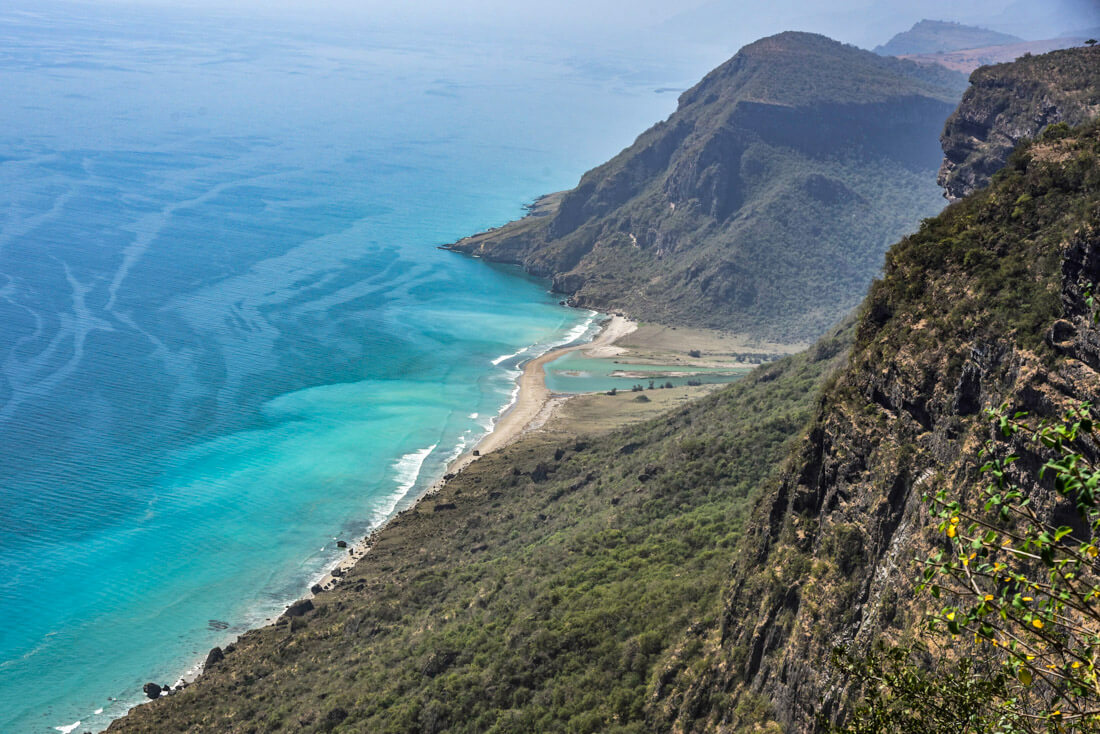
Dhofar coastline, somewhere near the Yemeni border – By the way, this isn’t a drone photo, but it was taken from the top of a cliff
3 – Experiencing the Omani traditional life
What I like about Oman is that, unlike its neighbors from UAE, Qatar, Bahrain or Kuwait, it is a country with a complex, ancient history that managed to keep its traditions.
From livestock markets to artisan shops, actual Bedouins and historical mountain villages, the cultural experience in Oman is just as great as its epic landscapes.
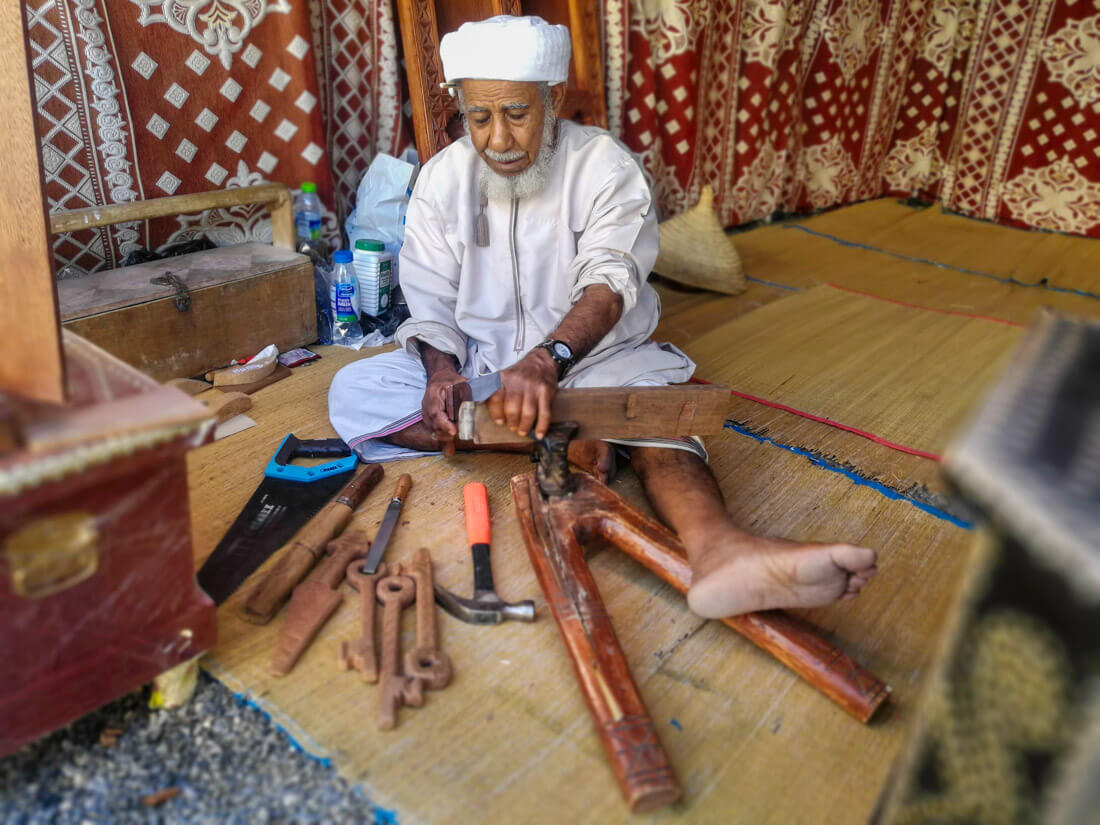
Artisan man, in Nizwa
4 – Camping at one of the many wadis in Oman
Oman is about outdoors and since the country is not known for its nightlife, not even Muscat, both locals and expats tend to spend their weekends outdoors, especially camping in a wadi (valley) over a night barbecue.
If you want to join an Omani group, check the weekly events on Couchsurfing.
If you decide to go alone and go on a weekend, expect kind Omanis to tell you to join them.
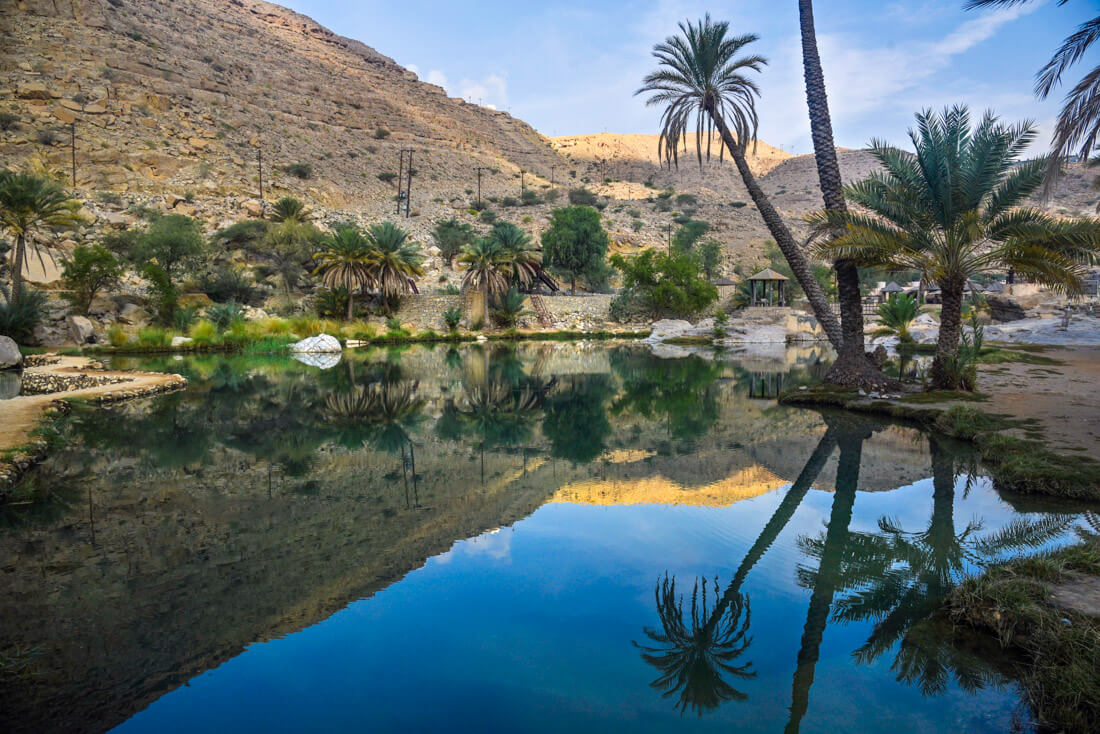
One epic wadi, somewhere in Oman
5 – The historical heritage, from ruined cities to epic forts and abandoned villages
Despite being a mostly desert country, Oman has a fair amount of historical places to visit, ranging from well-restored, impressive forts, like the one in Rustaq, Nizwa or Bahla; to absolutely ruined historical cities like the barely visited one in Manah.
Moreover, the mountains of Oman are also filled with abandoned villages that had been inhabited for centuries, but due to their inaccessibility, the Omani Government gave the villagers incentives to move to more accessible towns.
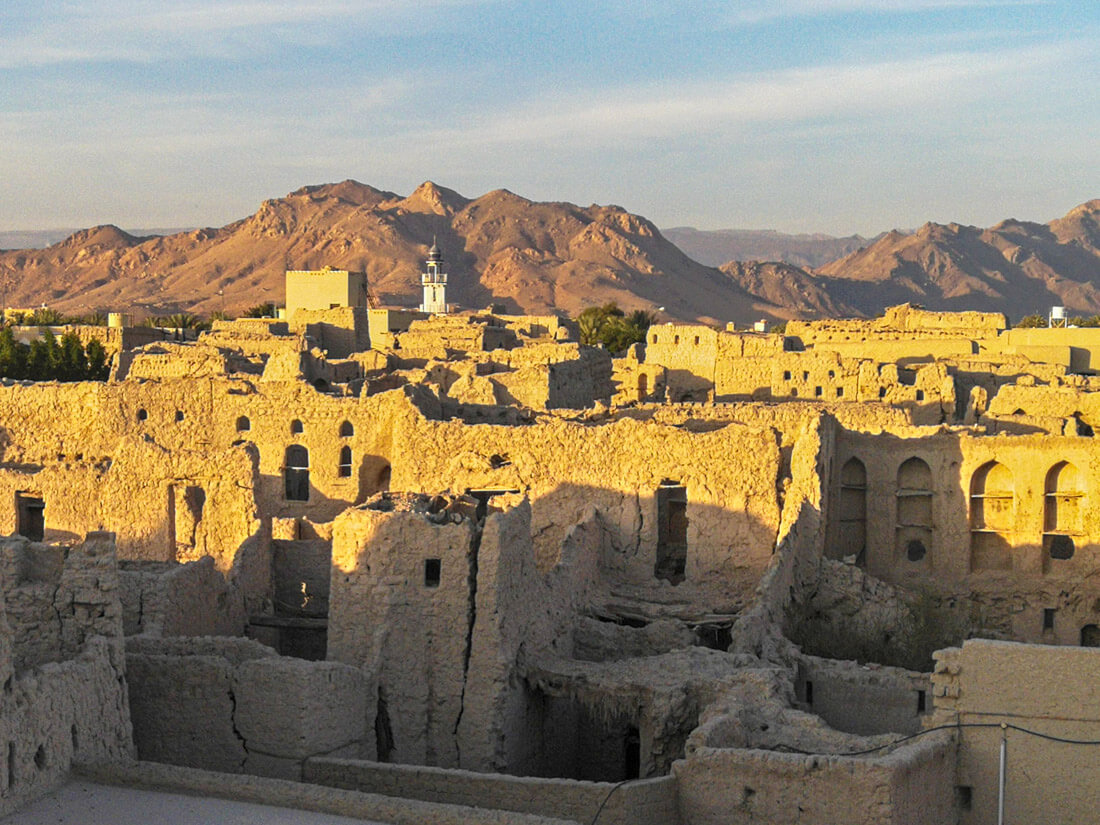
The ruined city of Manah
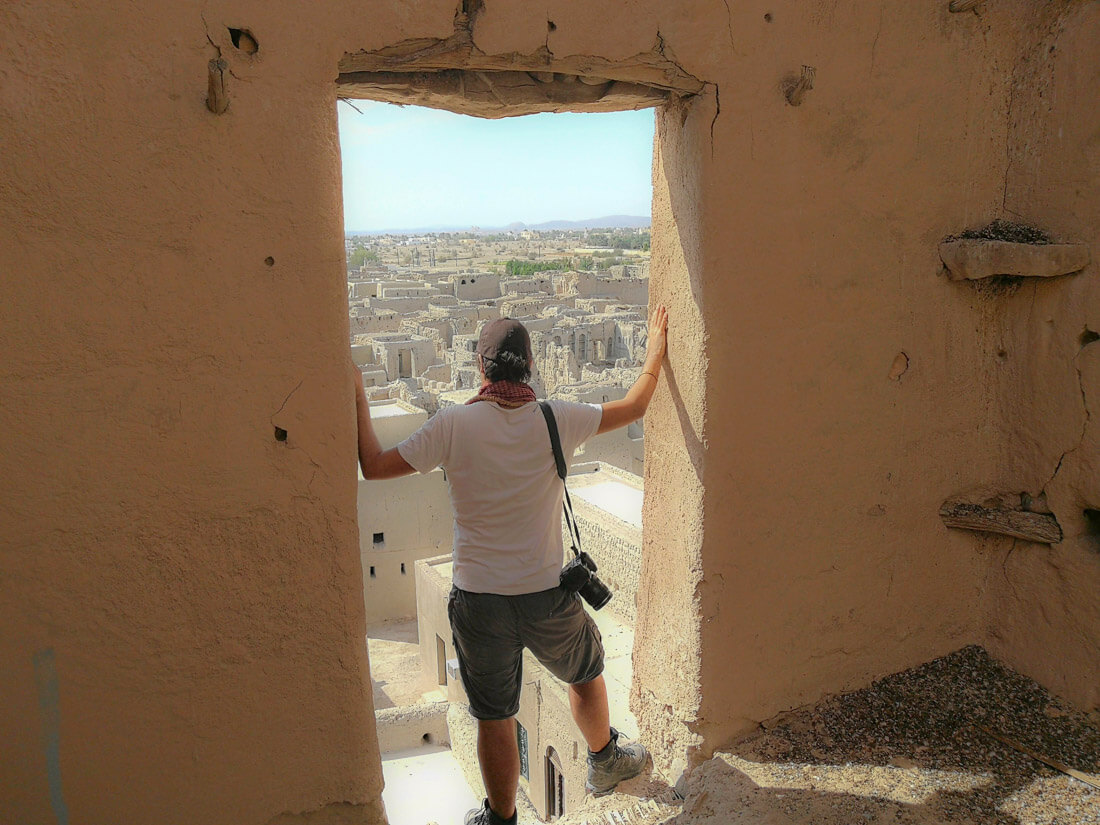
Manah ruined city
Independent travel in Oman. Do you need to join a tour?
Heads-up.Oman is a difficult country to move around, basically, because you hardly find public transportation. Therefore, to travel in Oman, you need to either rent a car or go on a tour.There is a third, more challenging way: hitchhiking – but we will get into that later. Below you can find a few examples but here I have put a compelling list: Best excursions, activities and day tours in OmanBest Muscat City Tour
Muscat is full of amazing sites, but it is not very walking-friendly precisely. Joining a tour will definitely prove cheaper than hiring a taxi driver. BOOK NOWBest adventurous tour: Jebel Shams
The Grand Canyon of Oman is one of the most epic, natural places in the country, and it is easily visited from Muscat on a day trip. BOOK NOWBest cultural tour: Nizwa
One of the most historically important cities in Oman has a great souq and a beautiful fortress. BOOK NOWYou may also like: the 10 best desert safaris in Dubai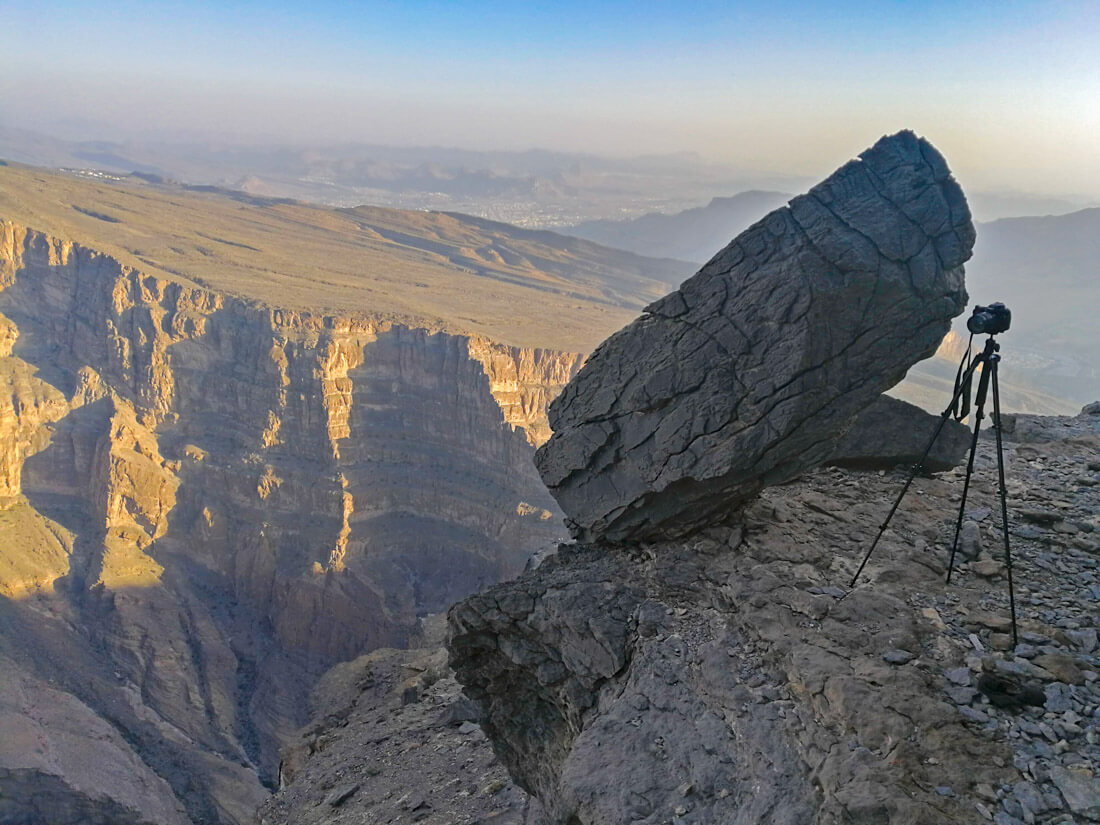
Taking sunset photos in epic Jebel Shams – Oman travel guide
Is it safe to travel to Oman?
Oman is safe and, perhaps, the safest country in the Middle East, no kidding.
Even the utterly negatively-exaggerated FCDO advice says that Oman is trouble-free.
The fact is that Oman is one of those countries where crime is a rare thing to see.
Actually, a good friend of mine from southern Oman told me that since he was born 40 years ago, there is only been one murder in his province (Dhofar), and it was between foreign workers.
How many people have been murdered in your province or city?
There are no pickpockets and nobody will mug you. Oman is very safe and terrorism is unheard of, especially because it has always kept away of all Middle Eastern conflicts.
For a more comprehensive analysis, read: Is Oman safe?
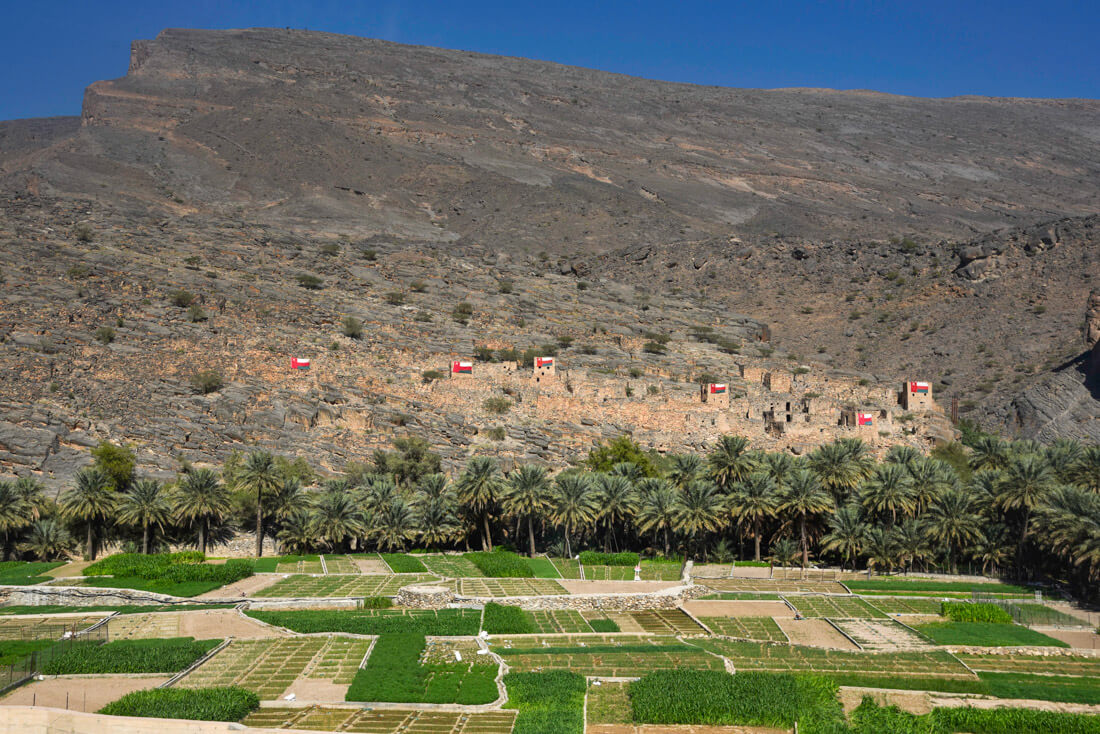
An abandoned village in the middle of an oasis
20 Facts about Omanis and the country of Oman
1 – Oman is an Arab country and Omanis are Arabs
It is one of the 22 countries that comprise the Arab League.
2 – Many Omanis are ethnically from Zanzibar
From the 17th to the 19th century, the Sultanate of Oman was a major maritime force that controlled a large part of East Africa, Zanzibar being one of the most important territories.
When you travel in Oman, you will see a lot of very dark Omanis with strong East African features. Most likely, their ancestors come from Zanzibar but, culturally, they are 100% Omani.
Read my city guide to Muscat!3 – And then you have the Baluchis
Balochistan is a region spread across Pakistan, Iran, and Afghanistan and, for many years, the Baluch city of Gwadar (in today’s Pakistan) was under Omani rule. Baluchis were known for being fierce warriors and that is why, over the centuries, the Sultanate used them as loyal mercenaries to consolidate Oman’s power.
Today, a large population of Baluchis still remain in Oman (about half a million) and while they are considered 100% Omanis, many of them speak a distinct language which is close to Hindi or Urdu, and they have similarities with their South Asian neighbors.
4 – But there are more groups
From the several Dhofari tribes in southern Oman (which are culturally closer to Yemen) to the Bedouins, Oman is ethnically rich.
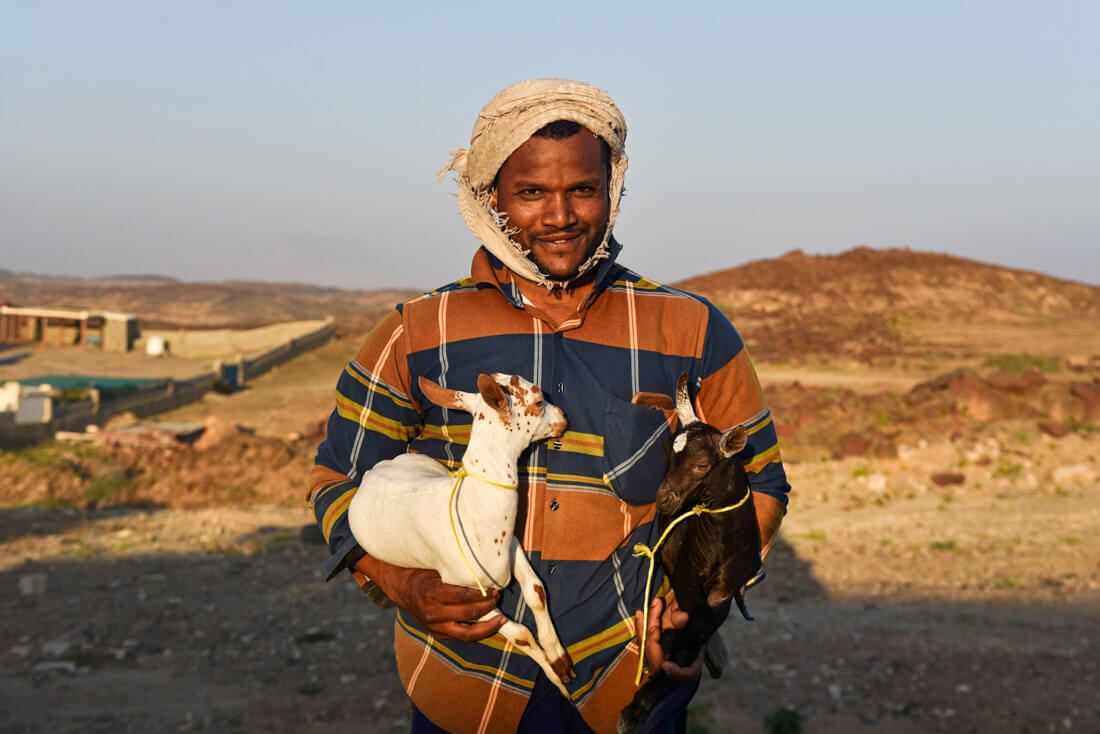
An Omani man from a certain Dhofari tribe, somewhere in the remote mountains of Dhofar province
5 – South Asians make up around 45-55% of the total population
By South Asians, I mean people from Pakistan, India, and Bangladesh, especially Bangladesh, most of them being workers with low-qualified jobs.
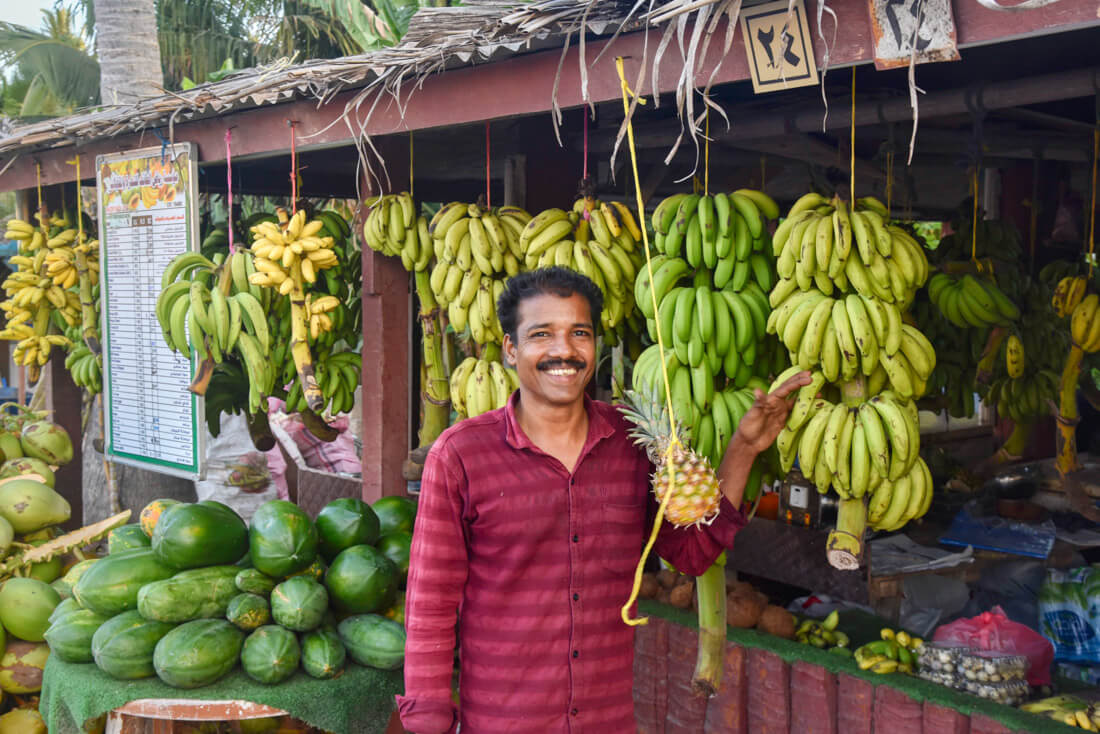
Bengali man selling fruit in Oman
6 – Arabic is the official language
Omani Arabic is very similar to the one spoken in UAE, Saudi Arabia and the rest of the Gulf countries, with its own similarities, of course. They claim that the Arabic from the Gulf is the closest to Classical Arabic, the Arabic the Quran is written in.
7 – Other languages, however, are also spoken
I personally spent several days in Dhofar province, staying with a guy named Mussab in a small village north of Salalah. Mussab spoke Jabali (Shehri), a language that sounded completely different from Arabic. He said that some old people from remoter villages in his region can’t speak Arabic, only Jabali.
8 – Many educated Omanis speak English
Especially in Muscat but, in smaller cities and rural areas, communicating in English can be a problem sometimes.
9 – Most Omanis are Sunni Muslims
There are small concentrations of Shias in Muscat and along the northern coast, but Sunni Islam is the prevalent religion.
10 – And they are a very conservative society
Islam is the basic pillar for pretty much any Omani, including the young generation. I hung out with Omanis from all ages and social classes and I barely met anyone who didn’t pray 5 times a day. They are strong believers and most of their rules, habits, and laws are based on Islam.
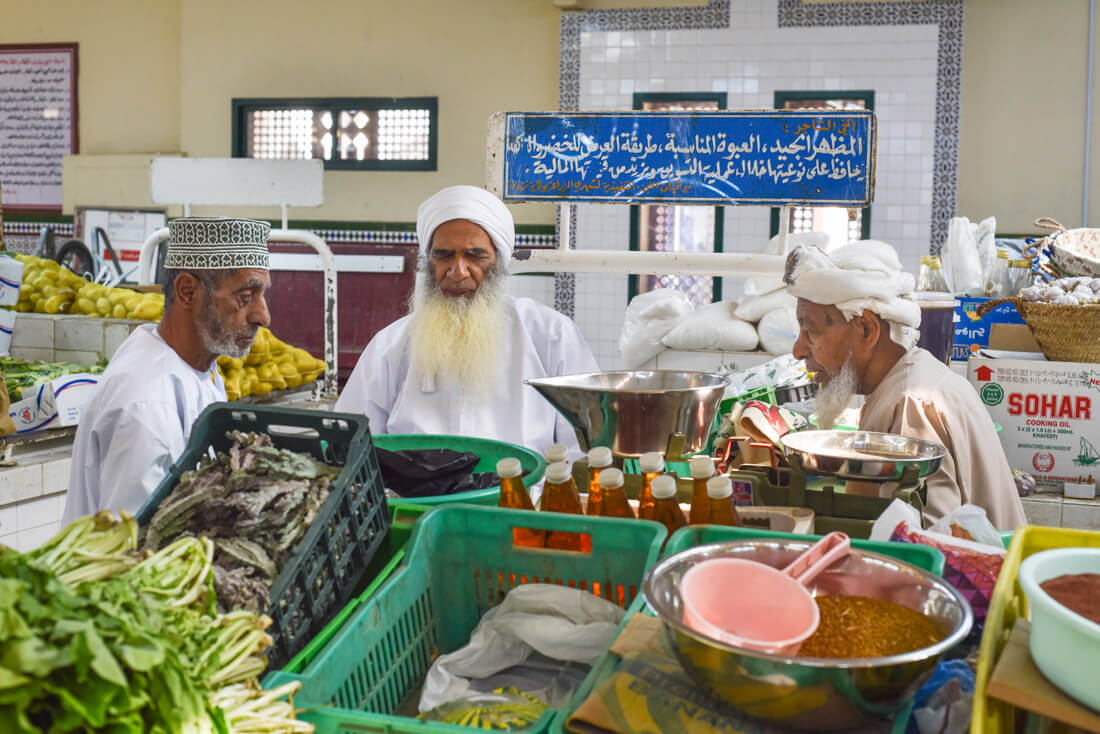
Some old Omanis in the market of Nizwa
11 – Conservative, but tolerant with foreigners
In Oman, there aren’t specific rules dictating how you need to dress, and alcohol is widely available for foreigners. Women don’t need to cover up and, if you want to wear shorts, you just wear them. Omanis understand the cultural differences between themselves and Europeans, so you don’t need to explain anything to them.
A piece of advice for women – When I was traveling in the touristic areas of Oman, I saw quite a few Western women dressing like they would do in a beach destination back home, and that was with very tight and small clothes. There isn’t really a law against that, and Omanis are the kindest people on Earth, so most likely, whatever you wear, they won’t say you anything to you because you are their guest. However, I certainly know that many Omanis get bothered when they see a woman dressing like that, especially in villages. Look, I know that I shouldn’t tell a woman what to do, but just bear in mind that you are in their country and, in order to enjoy their kindness and hospitality, showing your respect for their culture is a great start. You don’t need to cover your head or anything like that, but just try to dress more conservatively, and you will see that Omanis will receive you in open arms. For more information, read: Solo female travel in Oman12 – Some of the most hospitable people ever
You may think this as a cliché statement, but it’s not. Omanis are in the top 3 of the most hospitable people I have ever met, along with Iranians and Pakistanis.
Over my backpacking journey, I lost count of all the house invitations I got, plus the kindness of the many locals I hitched a ride with, always willing to meet and help you, expecting nothing in return.

With a family of Bedouins, somewhere in Central Oman
13 – You will visit many guest rooms, but nothing beyond that
Omanis are very private. Families don’t really like people entering their houses, especially because it is the only place where their women can roam around freely.
For this reason, all houses tend to have a guest room, which is a living room attached to the main entrance of the house. If you are a man, you won’t be allowed to cross that room but, in that room, you will be treated like a royal guest.
14 – About local women
Yes, Oman is a conservative Muslim society and as such, women have fewer rights than men but still, they are much further ahead than Saudi Arabia, especially when it comes to high education and public jobs, and you will hardly see any women wearing the niqab.
However, you won’t really see women socializing alone in the street and, as a man, you will hardly talk to any of them.
Read: 9 Misconceptions about traveling as a female in Saudi
Men & women dancing together, in a random festival I attended in Badiyah
15 – Expect to see many pictures from Saddam Hussein
I traveled around Oman always hitchhiking and, during my journey, I got lifts from many people who had Saddam Hussein’s photo hanging from the rear mirror.
Read: Iraqi Kurdistan travel guide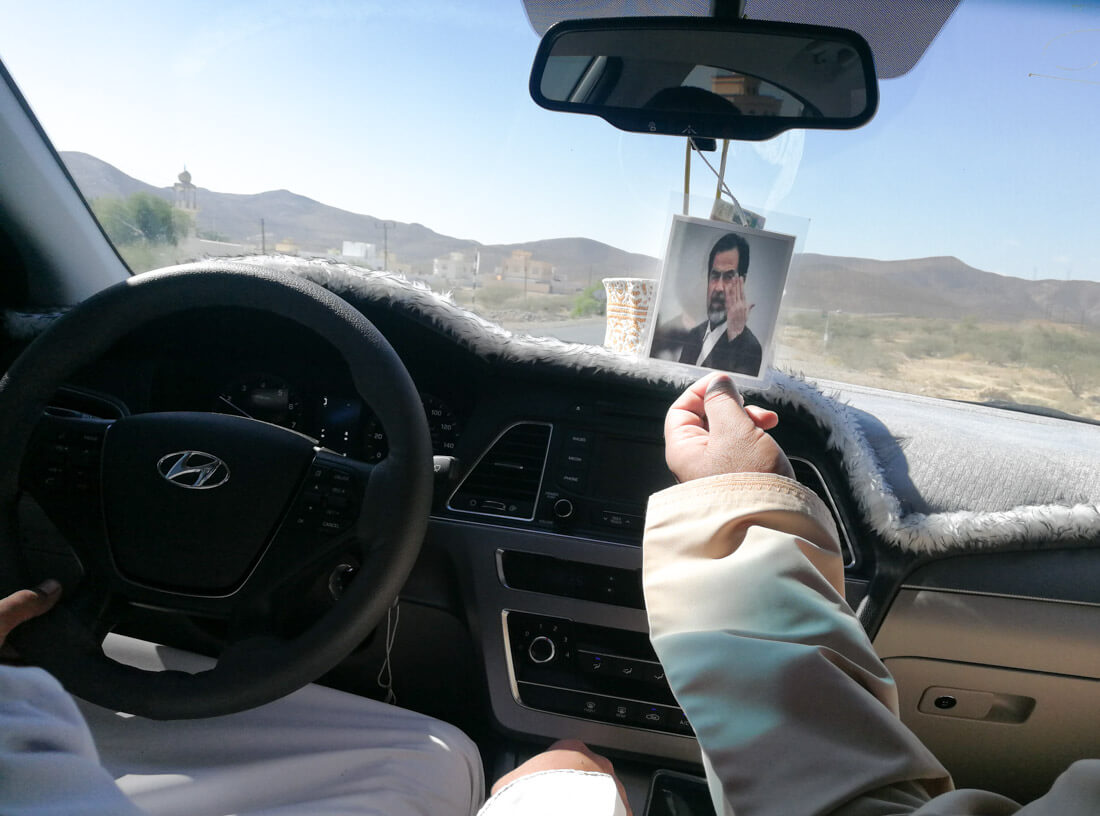
One of the few cars I saw with a picture of Sadam
16 – Get used to shopping from the car
Omanis have a strange custom which is that they don’t like to get out of their car when they go to the grocery store or want to take away food. Instead, they stop at the entrance and beep like crazy until a poor Bengali comes out asking for their order.
A strange custom which I never managed to get used to.
17 – They even have drive-thru ATMs
When I was at the gas station of Salalah, for the first time in my life, I saw a drive-thru ATM, which was also located right next to a few normal ATMs.
The shocking fact was that there were 3-4 cars standing on the line, yet, the normal ATMs were empty, which meant that they preferred waiting to getting out of the car – and it wasn’t due to the heat because it was during winter.
18 – The strangest signboards for shops
”Fish Marketing”, ”Food Stuff”, or ”Café that offers meals mainly”, among the most classic ones.
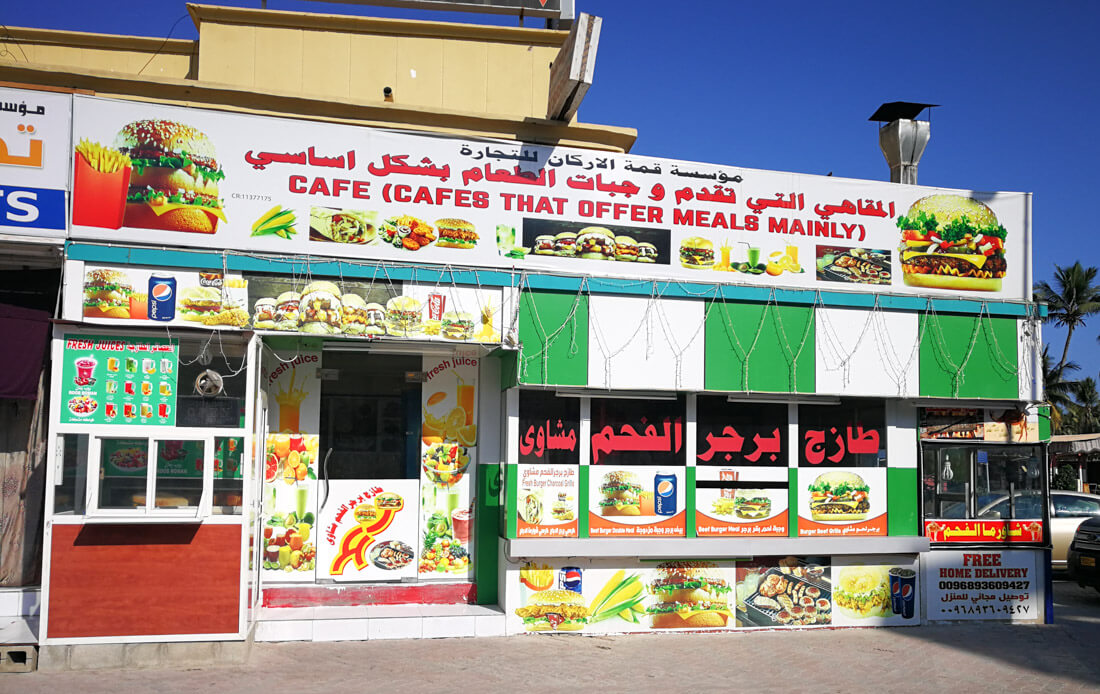
Café that offers meals mainly
19 – Sultan Qaboos is the most beloved leader in the world
There isn’t a single Omani who doesn’t love their leader and the reason is that he has made their country great, not only when it comes to giving free stuff to its citizens – like houses – but he introduced a bunch of liberal laws (like freedom of religion) which his dictatorial predecessor didn’t allow.
Sultan Qaboos passed away in January 2020 at the age of 79. May him rest in peace20 – What you need to know about camels
In Oman there are a lot of camels, but most of them are concentrated in the south, in Dhofar province (the north is more about goats). Dhofar is perhaps, the place with the largest concentration of camels in the world, no kidding.
They are absolutely everywhere, like sleeping in the middle of the road and stuff like that. Unfortunately, most of them will end up their days in a butchery.
Tales of Omani hospitality I wish I had space here to tell you all the stories of hospitality and kindness I had with the tens of Omanis I hung out with. As I told you before, I traveled in Oman completely by hitchhiking, camped in the middle of towns and cities, and did a lot of Couchsurfing. When you are backpacking this way, the local interactions are non-stop and in most cases, Omanis just tried to be overwhelmingly helpful. I got invited to have coffee to countless houses, they took me out for lunch and dinner every other day and, on many occasions, the people I hitched a ride with, always insisted on driving me to my exact location, even if that required them to make a huge detour. For this reason, I strongly recommend you travel in Oman independently, not on a tour.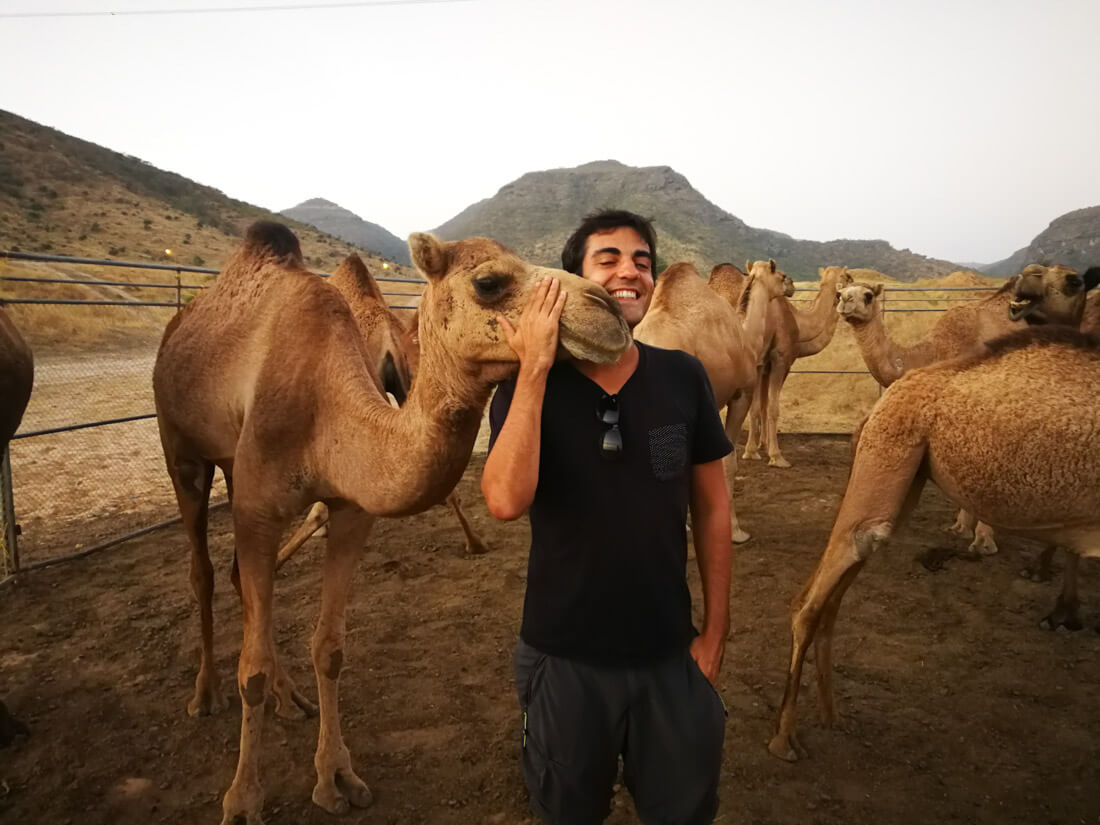
I love camels

Food and coffee in Oman
Honestly, food isn’t the highlight of any Oman trip, but there are some surprises and interesting facts.
The first thing you need to know is that Omani cuisine is very limited, as it mainly consists of meat or fish with rice, served in ridiculously massive portions.
Camel meat is eaten all across the country but nowhere like in Dhofar province, the place with perhaps, the largest concentration of camels in the world. In Salalah and around, camel meat is eaten very regularly in most restaurants, usually grilled, but you also find camel shawarmas, burgers and stuff like that.
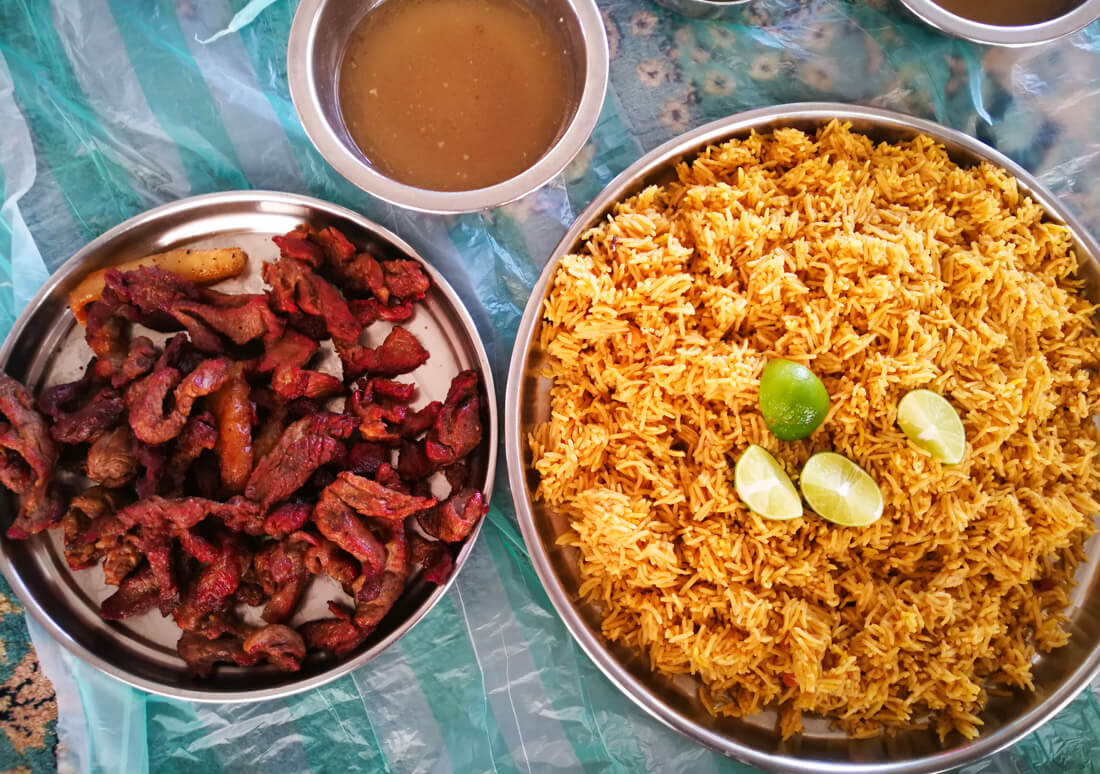
Grilled meat plus a huge amount of rice. This massive Omani meal cost around 7-8USD and it could feed 3 people
Besides rice with its respective portion of protein, you may also find shurbah, a local soup made of oatmeal, tomatoes, and other vegetables.
That’s it pretty much when it comes to Omani food but, one day when I was Sadeh, a coastal village 2 hours north of Salalah, my host wanted me to eat a very special dish from his region.
And what are we gonna eat? – I asked
He didn’t know the name in English, so he Googled it and said: It’s called oysters. My friend catches them.
I thought we would be eating oysters in the same way we eat them back home but instead, he brought a massive dish of oysters without shells, cooked in a spicy sauce, but they still preserved the strong sea taste oysters usually have.
That dish was, definitely, one of the best dishes I ever had traveling, if not the best.

Loads of oysters, cooked in a spicy sauce
On the other hand, due to the big Indian influence, you also find loads and loads of restaurants – even in the smallest villages – serving all kinds of Indian food, ranging from daal to fish curries, and even calamari masala, always very cheap. Daal was usually my everyday breakfast.
Here are some facts about eating when you travel in Oman:
Typically, you will eat on the floor, with a plastic tableclothUsually, everything will be served on one single plate, even if you are several people, and you will eat from the same plate.You eat with your hands, and no plates or forks are provided. Guests are not supposed to leave any food – That was hard because of the XXL portionsIn rural areas, you should eat with your right hand and doing otherwise is considered rude – This rule applies in all Muslim countries but Oman is particularly conservative and, along with Saudi Arabia, it is the only country where, on several occasions, the locals told me I was doing it wrong (I am left-handed).What you need to know about kahwa
Kahwa is the local coffee from the Arabian Peninsula, consisting of regular coffee with cardamom, served in a traditional pot.
The problem with kahwa is that if you travel in Oman independently and have a lot of local interactions, you will be offered this coffee several times a day, meaning that you will have a shit load of cups, therefore, your heart rate is likely to increase.
When I was hitchhiking in Central Oman, where tourists are rare, one day I had to have more than 25 cups of kahwa – no kidding – as you are supposed to have at least a few when you are offered.
If you are in a house, kahwa will be typically served with dates and if you are lucky, with tajin as well, a kind of sauce in which you dip your dates.
In fancier occasions, they will serve it with halwa, a traditional sticky, jelly-like dessert made of wheat starch, eggs, saffron, cardamom, nuts, and A LOT of sugar. It’s a bomb.
What to do with all the dates
Of course, dates are immensely popular in Oman, especially in the north, and they claim that dates from Nizwa are the very best. Every time I stayed with an Omani from the north, they gifted me with a crazy bag loaded with dates, and they were so heavy.
Since I couldn’t finish them all, they were piling up, so every time I hitched a ride with a foreigner, I also gave them dates.
Money & budgeting when you travel in Oman
In Oman, they use the Omani Rial (OR) and, approximately, 1USD = 0.39OR – Yes, it is worth more than 2USD.
Omani Rials are split into baisas (bzs) and 1OR = 1,000bzs
The Omani Rial is a stable currency.
Exchanging money in Oman
Given the fact that half of the population are foreigners, money exchange offices abound.
TMsPlenty of ATMs everywhere
Credit cards
In local eateries, taxis, small shops, budget hotels etc. you must pay in cash, so always bring plenty of it.
How much does traveling to Oman cost?
All right, Oman is an expensive destination (yeah, really), for two reasons:
There is no public transportationThere aren’t budget hotelsHow much you will spend when traveling in Oman is hard to say, as it will depend on several factors.
For example, I have never spent much because, during my first 6 or 7 visits, I always came with my own car and used to camp in the wadis or the beach and, on my last occasion, I was purely hitchhiking and Couchsurfing, so I barely spent 20USD a day.
Local food is actually cheap but, if you rent a car and stay in hotels, costs will add up significantly.
Here are the typical prices of the most basic stuff:
One-month visa – 20OR (52USD)Welcome package SIM + Data – 3OR (7.80USD) but then you pay 3OR for 1GBThe most budget hotel – 10-12OR (26-31USD)A plate of daal – 500bzs (1.30USD)A biryani – 1.5OR (3.90USD)A big bottle of water – 200bzs (50¢)A beer – 4OR (10USD)Short taxi rides within Muscat – 2.50OR (6.50USD)Bus from Muscat to Salalah – 7OR (18USD)How to travel in Oman on a super budget:
Do hitchhike (it is fairly easy)Do CouchsurfingOnly eat in Indian-run restaurantsGo to the mountains and camp outdoorsSign up for Couchsurfing events and join weekend tripsIf you want to know more, read my guide on how to go backpacking in Oman on a super budget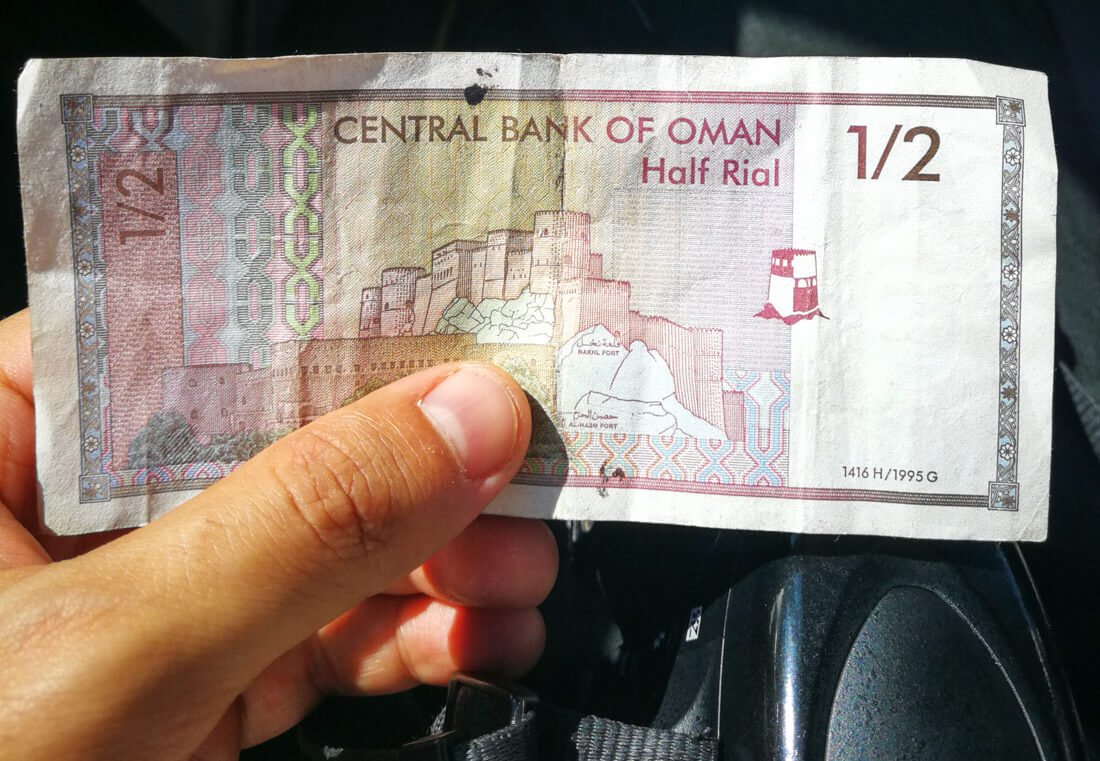
Half Omani Rial, the most curious note
Transportation tips – How to move around Oman
In Muscat
Regular taxi – If you don’t have a car, taxis are the way to go in Muscat. They don’t have taximeters, however, and taxi drivers from Muscat are really annoying because they always try to rip off tourists. I recommend using Careem or Uber.Bus – There are a few bus lines in Muscat that go all the way to Ruwi from the airport. They cost 500bzs. For more information, read my Muscat City GuideRenting a car in Oman
To be very honest, Oman is a country that is best explored by car, as the vast majority of its places are completely inaccessible.
A car will make your life much easier, plus you will be able to find epic camping spots and just have a lot of freedom.
I recommend you find your car via Rental Cars, a search engine that helps you find the best deals, no matter where you are.
Do you need a 4×4 for your trip to Oman?
Before making this decision, you need to think: where are you going to go?
The roads in Oman are generally good and the only 2 places I went where a 4×4 was needed were Jebel Akhdar and the road from Al Hamra to Rustaq via Bald Sayt.
Then, you have the Empty Quarter but, even if you had the best 4×4, it is not recommended to go without an experienced driver – The dunes in the Empty Quarter are a few hundred meters high, and they are shifting sands.
Unless you really want to drive off-road, bear in mind that renting a 4×4 is much more expensive than a regular car, so you really need to assess whether it is worth to pay the extra money for being able to go to Jebel Akhdar and Bald Sayt.
Traveling around Oman by bus
Traveling in Oman by bus sucks, for 3 reasons:
They just go to the main cities and townsThere are only a few a dayCities in Oman are not walking-friendly, so when you get to a city by bus, you are screwed again.Going by bus isn’t a good option for traveling in Oman.
Hitchhiking in Oman
The best option for budget backpackers.
Hitchhiking in Oman is super easy. I hitchhiked more than 1400km, from Salalah to Muscat and everything in between, and never had to wait much.
For more information, read my budget backpacking guide in Oman.
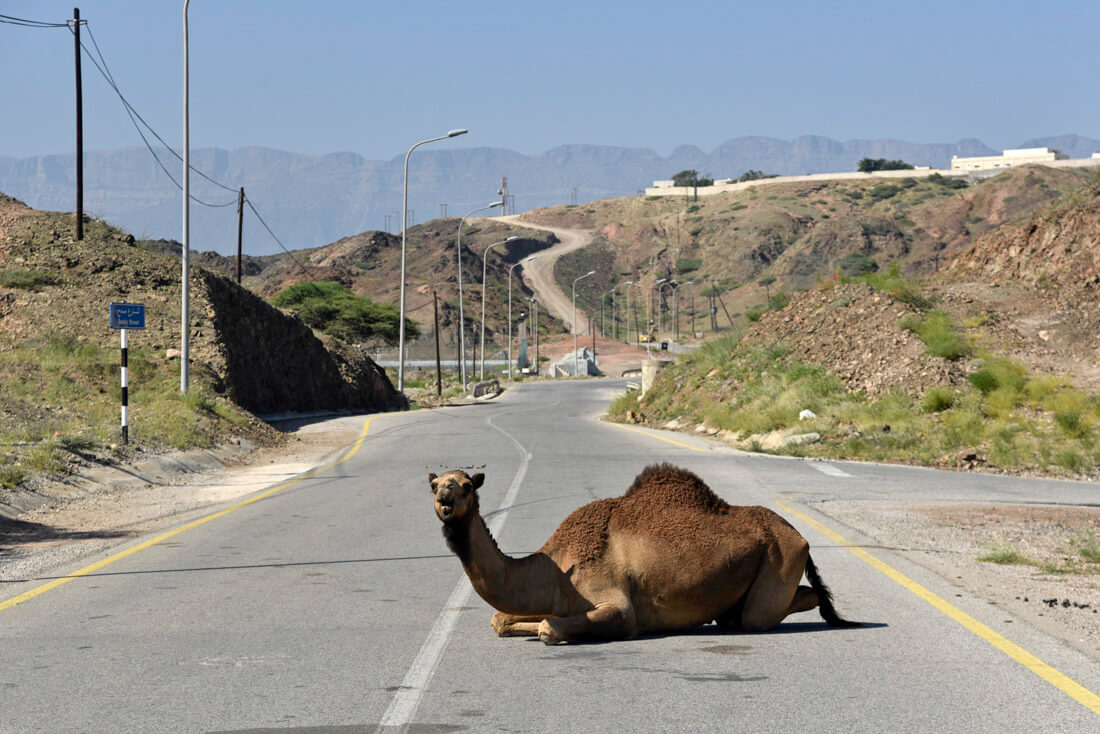
Why visit Oman? Camels are often found on the road
How to get to Oman
Traveling to Oman by air
Today, there are many international connections coming from different European and Asian cities to Muscat. However, flying to Dubai will always be cheaper, so I recommend you check both and then you decide.
The southern city of Salalah also has an international airport, with connections from other Arab countries, India, Pakistan, etc.
Traveling to Oman by land
Oman shares a border with UAE, Yemen, and Saudi Arabia.
UAE – Traveling from Dubai to Muscat is a 400km drive. You can come by car but there are also buses from Bur Dubai. Check here for more infoSaudi – Apparently, the border was recently opened, but there are no buses and it is actually faster going through UAE, which would be a 1,300km drive from Riyadh to Muscat. Read my travel guide to Saudi Arabia. Yemen – The border is open but it is a very long drive. For more information on visiting Yemen, read this postAccommodation tips – Which kind of accommodation do you have?
Check my comprehensive guide on how to find the right accommodation in MuscatThe first thing you need to know is that in Oman there aren’t hostels or guest houses, only hotels.
Budget Hotels
Only available in big cities and on roads. You pay 25-30USD for a single room but on the bright side, the few I stayed in tended to be clean and have some minimum standards.
Hotel-apartments
In big cities, you can also find hotel apartments, which are very good value-for-money if you are more than 2 people.
Mid-range hotels
In rural touristic places such as Jebel Shams, Jebel Akhdar, villages like Bald Sayt, etc. there aren’t budget hotels and rates may easily start at 100USD per night.
5-star hotels
The offer of luxury hotels in Oman is very large.
CLICK HERE TO CHECK THE BEST HOTEL DEALSCouchsurfing
Plenty of profiles but I recommend you send the requests in advance because Omanis tend to take a while to reply.
Internet in Oman
Wi-Fi – Wi-Fi usually works great but, unfortunately, it is difficult to find a Wi-Fi network, as the internet is expensive in Oman, so only hotels and Western-style cafés can afford it. So, when you are traveling in rural Oman, getting connected may prove challenging.
Moreover, Wi-Fi networks tend to require a local Omani number in order to connect, so you will have to buy a SIM Card anyways.
SIM Card – SIM Cards in Oman are expensive as well. Omantel is the most popular one. They offer an entry plan which may be enough for short-term stays but then, if you are planning to travel to Oman for several weeks, the price per GB is pricey, like 8-9USD for 1GB worth of data.
More information to add up to this Oman travel guide
Check this list of the best hotels per area of the city in Muscat
The best activities and excursions to do from Muscat
Here you can find all my articles and guides to Oman
Traveling to Saudi Arabia? Here you can find all my articles and guides to Saudi Arabia
Are you traveling to Dubai and have little money? Read how to travel in Dubai on a budget
Also don’t forget to check the top 10 desert safaris in Dubai
…and the best day tours and excursions from Dubai
Iran is so close to Oman, are you going there? Remember to check then my tips for visiting Iran
And here all my content to the Middle East
This Oman travel guide contained everything you needed to know for your trip. If you have any additional information or questions, kindly post them in the comments section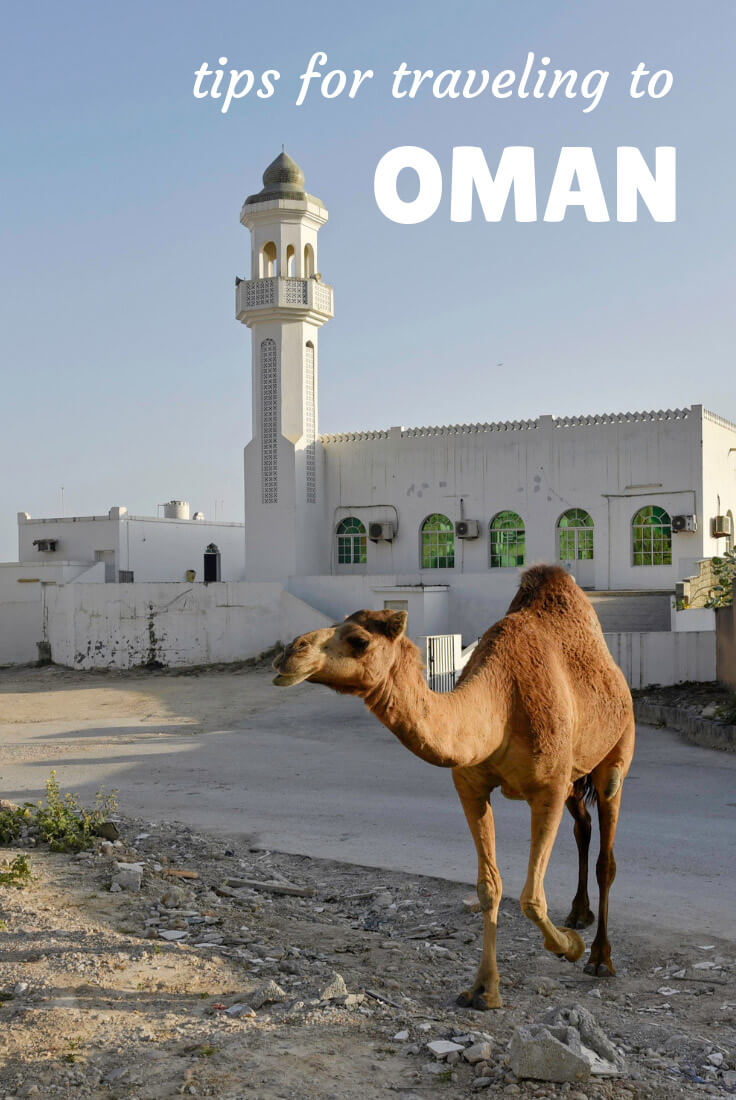
-
By: Joan Torres
Title: Tips & How to travel to Oman in 2021
Sourced From: againstthecompass.com/en/travel-oman/
Published Date: Thu, 21 Oct 2021 06:00:00 +0000











